After the 1979 Islamic Revolution in Iran, many Baha'is, including doctors and nurses, were arrested, imprisoned and even executed. And in addition to individual Baha’is facing persecution for their beliefs, several hospitals and medical centers established by Baha'i initiatives, and at the expense of Baha’i donors, were confiscated by the Islamic Republic’s Mostazafan Foundation. Misaghieh Hospital was one of these Baha’i-established medical centres – first founded by the Baha’i merchant Abdol Misagh Misaghieh and now operated under the name of Mustafa Khomeini.
On June 6, 1979, agents of the Mostazafan Foundation, one of Iran’s largest financial institutions and run directly by the Supreme Leader, had orders to invade the Misaghieh Hospital in Tehran. The orders named one Siamak Sotoudeh, who had been commissioned by Massoud Sotoudeh, the head of the confiscation department of the foundation, to investigate the operations of Misaghieh Hospital which was then “confiscated according to the ruling of the Islamic Revolutionary Tribunal.”
Professor Manouchehr Hakim, the hospital's managing director, objected to the orders on the grounds that no court of law had ordered the confiscation of the hospital. Two days later, Dr. Hakim went to the office of the Attorney-General, where he discovered that no orders had been issued by the prosecutor. Dr. Hakim referred the matter to the Mostazafan Foundation – they also refused to produce a formal verdict authorizing the confiscation.
On June 13, 1979, around noon, several armed guards entered Misaghieh Hospital and occupied it without showing a warrant. Two assailants, Khosrow Sadeghi Tehrani and Mohammad Razeghi, were tasked with seizing the hospital and all its property and documents, according to a decree issued by Abolghasem Sarhadizadeh, who was the Mostazafan Foundation’s deputy director for confiscated properties. Sadeghi interrogated the director of the hospital and Razeghi examined hospital documents.
On June 21, according to a decree issued by the Mostazafan Foundation, Dr. Abbas Paknejad was appointed to oversee the hospital. Two days later, Paknejad appointed Mohammad Razeghi to the internal management and made all hospital receipts and payments conditional on his signature. The takeover by revolutionary forces was complete.
The management of the hospital was now taken out of the hands of specialized and experienced professionals. Baha'i staff began to be dismissed. Hospital managers were repeatedly changed. Razeghi lasted only two months in the hospital management and was replaced by a revolutionary named Dr. Sadeghi – who was in turn fired for mismanagement and replaced by Dr. Houshang Fazel. But the arrest and execution of Houshang Fazel's wife, on charges of collaborating with the Mojahedin-e Organization, led to Dr. Fazel’s own dismissal. Fatemeh Karroubi then took charge of Misaghieh Hospital, now known as Mostafa Khomeini Hospital, helping to bury its Baha’i history.
The Founder of the Misaghieh Hospital
Misaghieh Hospital was founded in 1949 by the Baha’i merchant Abdol Misagh Misaghieh. Abdol Misagh was a Baha'i from Kashan, from a Jewish background, and the first child of Agha Yehuda and Jahan Khanum. His father was a well-known silk merchant in Kashan who became acquainted with the Baha'i faith through his interactions with Baha'is.
Mr. Yehuda was known for his considerable religious knowledge and his house was always a meeting place for those interested in religious matters. Abdol Misagh was acquainted with the teachings of Iran’s several religions since childhood. Mr. Yehuda’s conversion to the Baha'i faith caused him great trouble. He was imprisoned for a time under orders from Kashan’s governor, and after his release, was severely beaten with shovels, pickaxes and bricks by fanatical neighbors. The severity of his injuries was such that his family was forced to take him to Tehran for treatment. One night in Tehran, Mr. Yehuda, who was still receiving medical treatment and could not walk well, fell from the roof and died aged just 40 years old.
Abdol Misagh was called Elias as a child. But after receiving the title of Misaghieh from ‘Abdu’l-Baha, son of the Baha’i faith founder Baha’u’llah and head of the religion from 1892 to 1921, he changed his name to Abdol Misagh; or “servant of Misagh.” Abdol Misagh's father sent him to school at the age of six and brought in a private tutor to teach him Persian, Arabic, correspondence and literature. The private tuition gave Misaghieh literary and calligraphic talents. Many people came to him asking him to write letters or other documents on their behalf. He also had a talent for poetry which he had composed since a teenager under the pseudonym “Zarreh.”
The beating and death of Abdol Misagh’s – at that time, still called Elias – father forced the son to drop out of school and to travel to Hamedan to conduct business in his father’s place. But the family fell into poverty and young Elias was obliged to support the household.
Elias worked for many years in Hamedan, Rasht and Kermanshah and finally settled in Tehran. He was self-made, and had entered work when still a child, raising sufficient capital to start a successful trading business. He was able to also support and promote many of his colleagues and friends in their positions and careers through his own business. Misaghieh also participated in most public welfare services and devoted part of his time and capital to the needy and poor of the community.
Abdol Misagh Misaghieh married Maryam Motahedeh in Kashan. Maryam accompanied her husband in his affairs and was an instrumental partner in establishing and managing the Misaghieh Hospital.
Abdol Misagh and Maryam had a daughter and three sons. One of his sons, Mehdi Misaghieh, was the founder and owner of Misaghieh Studio (now the Farabi Cinema Foundation) and was imprisoned for some time after the Revolution on charges of being a Baha’i. Mehi Misaghieh’s property was confiscated by the government.
Abdol Misagh Misaghieh died on November 21, 1981 at the age of 91 in Tehran.
How was the Misaghieh Hospital Built?
In 1949, Abdol Misagh Misaghieh purchased a building to house the city's Baha'i students. The Baha'i National Spiritual Assembly suggested the site be turned into a hospital for the benefit of all. Misaghieh provided medical equipment and other hospital supplies.
Misaghieh Hospital was a private non-profit and modern medical center, built to serve all people in the community, which received no assistance from the government. The hospital had 110 beds for adults and 60 beds for children: a large hospital at the time. One free bed was provided for each of the Armenian, Assyrian, Sunni, Zoroastrian, and Jewish religious minorities, and unlimited free beds for Shia Muslims. The hospital had several operating rooms, a delivery ward, laboratories, a physiology ward, a physiotherapy ward, and hydrotherapy and rehabilitation facilities.
The hospital polyclinic examined patients for free. The accident ward served patients 24 hours a day with a doctor on duty at all times. The hospital pharmacy was open until ten o’clock in the evening. Two large incinerators with large furnaces were installed. All of these were innovations at the time and were unprecedented in Iran’s public health. But the most notable innovation of Misaghieh Hospital was the use of a power generator independent of the city's electricity network – as a backup to the electricity grid in case of emergency.
The number of hospital admissions was initially low due to the hospital’s Baha'i ownership and investment. Most Iranians had come to believe that Baha’is were “unclean” and to be avoided because of the preachings of Islamic clerics. But the hospitalization at Misaghieh of Mahmoud Namjoo, the national weightlifting champion, who was admitted for for tonsillectomy and gastric surgery, and the hospitalization of Ayatollah Zanjani, at the suggestion of Dr. Jahanshah Saleh, the then minister of health, shattered the hesitation and the taboo.
The presence of athletes, artists and clerics who came to the hospital to visit these patients caused the number of patients referred to the hospital to increase. Abdol Misagh Misaghieh had to expand the hospital by purchasing several adjacent buildings. The efforts of the hospital’s staff later helped it to receive an excellent grade according to the government's assessment.
Increases to the hospitals services and demands, and staff shortages, prompted the board of directors of Misaghieh Hospital to consider establishing a private nursing school. The teachers were mostly Baha'i professors at the University of Tehran who taught in the nursing school and provided free materials. The nursing assistance course was two years and the full nursing course was three years. Students also received free food and housing. Despite opposition from some government departments, the Ministry of Higher Education issued licenses for the two nursing schools, and Misaghieh Hospital was the first independent hospital in Iran to establish affiliated institutions such as the nursing school.
The management board of Misaghieh Hospital also purchased a large house in the Darous neighborhood of Tehran and turned into a nursing home to provide long-term care to stroke patients and from sufferers of chronic disorders such as Parkinson's disease and Alzheimer’s. The Darous Nursing Home was equipped with a library, a cinema and a music room. The home was funded by contributions from Baha'is and some elderly people; it was confiscated after the Islamic Revolution and the home’s Baha'i elderly were expelled.
Confiscation and Appropriation
After the Islamic Revolution, Misaghieh Hospital, like many Baha'i properties, was confiscated without a court order. The name of the hospital was changed from Misaghieh to Martyr Mostafa Khomeini – named after a son of Revolution’s founder Ayatollah Ruhollah Khomeini. Baha'i management and staff, including physicians, nurses, and service providers, were fired. Finally, on April 28, 1980, Mohammad Mohammad Gilani, the religious judge of the Islamic Revolutionary Court, confiscated the property on behalf of the Mostazafan Foundation.
Professor Manouchehr Hakim, the founder and head of the Department of Anatomy at the University of Tehran, who had been the director of Misaghieh Hospital for 31 years before it was confiscated, was shot and killed on January 12, 1981 by unknown individuals at his private office. Iranian government officials have denied any connection to Dr. Hakim's murder. But three days later the professor’s house and his properties were sealed and confiscated.
A few older residents of Tehran today, whenever they pass Mostafa Khomeini Hospital, will still explain to their companions that there was a time when the hospital was called Misaghieh Hospital and was run by the Baha'is.
Read other articles in this series:
The Baha’i Doctor Murdered by Muslim Vigilantes in 1950
The Baha'i Doctor Tortured and Killed after Eradicating Malaria in Hamedan
The Doctor With the Unforgettable Smile
A Devoted Pediatrics Pioneer Working in Dangerous Times
visit the accountability section
In this section of Iran Wire, you can contact the officials and launch your campaign for various problems




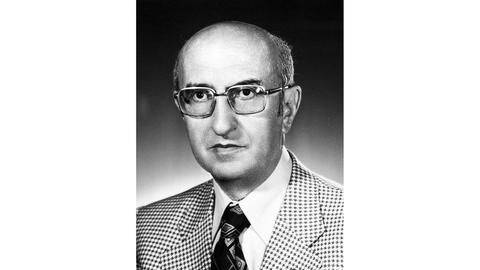
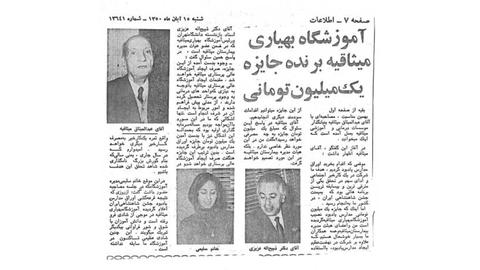
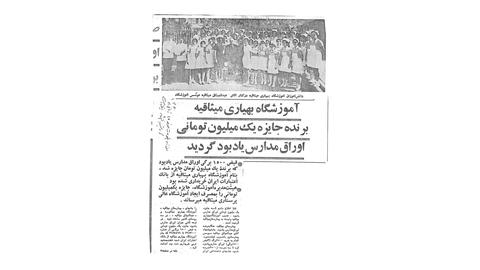
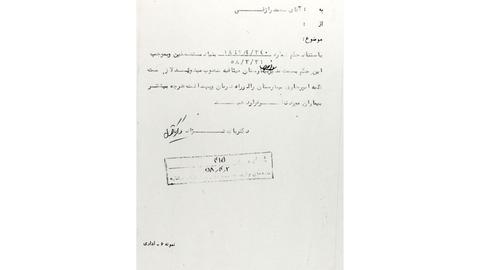
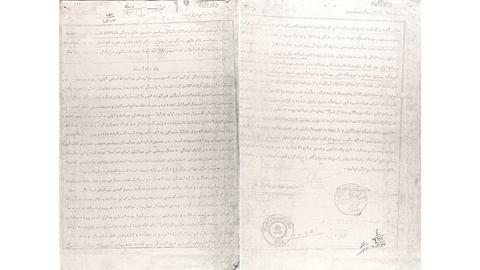
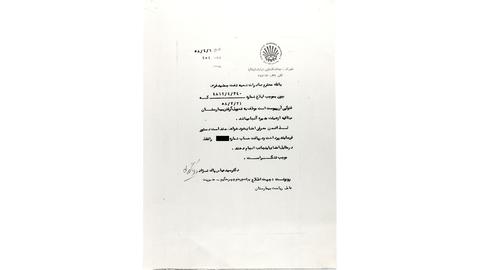




















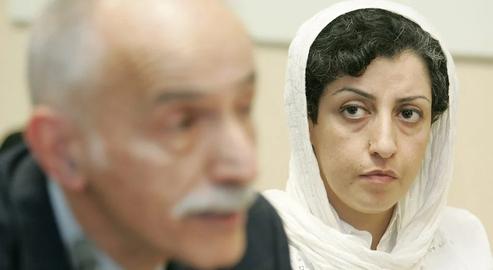
comments